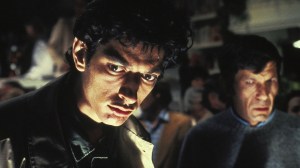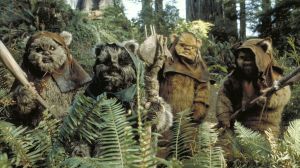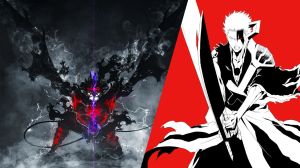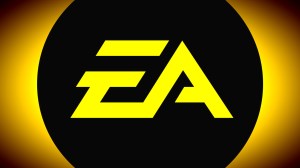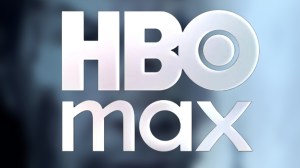Hellboy: Web of Wyrd is now available on most consoles and PC for players, and unlike previous attempts to bring the comic character to life it’s done in a unique way. The new game from Upstream Arcade has recreated Eisner winning comic creator Mike Mignola’s style from the pages of Hellboy comics as the main visual look for Hellboy: Web of Wyrd. ComicBook.com spoke with Upstream Arcade co-founder Adam Langridge and art director Patrick Martin about how they were able to pull this off, and frankly it was their biggest challenge.
Videos by ComicBook.com
ComicBook.com: I know Mike is pretty protective over his style, his artwork. What were the conversations like in not only pitching him on a new Hellboy game, but a game that would look like his drawings?
Patrick Martin, Art Director: It was pretty nerve wracking. Obviously I was familiar with it and with his art style before we’ve even started to pitch, but you’re not necessarily used to drawing it as it were. You can observe it from a consumer (standpoint), as a reader and pour over the imagery, but it wasn’t something that we were familiar with drawing and rendering. So there was a lot of going through the comics, looking at his art styles, how it changed from the nineties up to now, and identifying how Hellboy had changed over that time. How he carries himself. We made a point of everyone in the studio making sure they had the time at the start of the project to read the comics and also comics with other artists as well, and kind of have a conversation about what is it that makes Mike Mignola’s Hellboy, Mike Mignola’s Hellboy, really. And it was just lovely to do, really. It brought everyone up into that sort of same way of thinking really quite early on. I mean, there’s such a body of work that, and there’s clues everywhere. There’s clues of how eye shapes, and I’m trying to think now, the way shadows fall. Hellboy’s physique not only for the art, but also for animators as well. There’s clues there, how he carries himself and his heft. Really thankful to Mike because he’s got all that work, and it allowed us to really mirror it into a game.
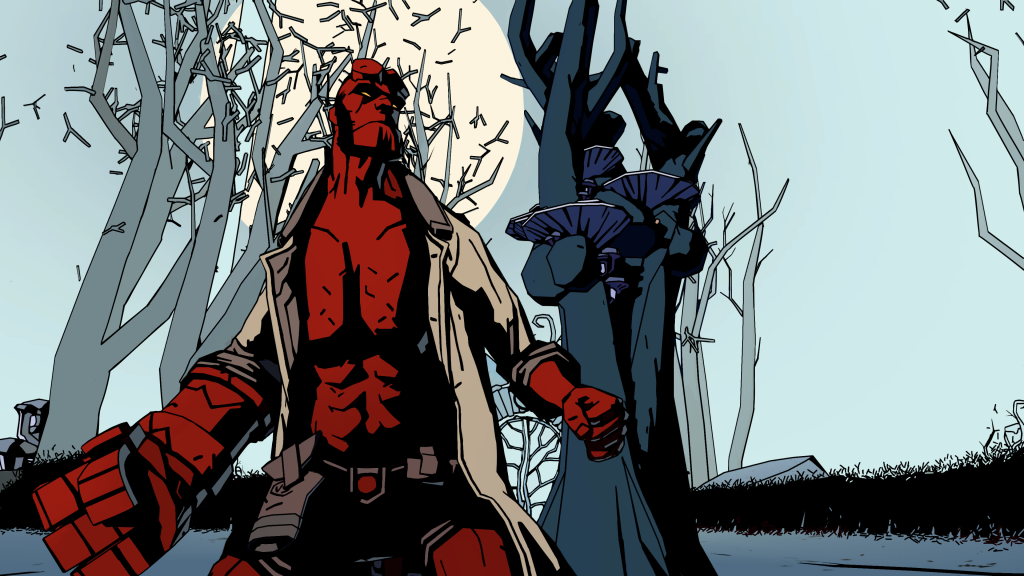
CB: What was his reaction when you asked him about it? Or did he have one beyond ‘Go for it.’
Patrick Martin: He was like, thank you for making Hellboy feel like himself. That was just like, oh, wow, shivers down your neck. This was in person, and before then, obviously things are exchanged over messages and things like that, and it is not like seeing someone face to face and seeing their body language and read it. And to have that sort of come back at me, it was just like I was almost on the floor, really. And it was a testament to everyone on the team and the work that they put in and graphics and coding and the artists and the animators getting it to work that it was just like, what an amazing compliment.
CB: We touched on it a little bit here, but the thing that immediately catches my eye playing the game or seeing the videos or whatever are the shadow effects, because shadows and negative space are a huge piece of how he creates images. But when we look at Hellboy comics and Mike’s art, it’s static imagery. And obviously this is a game where a movement is a paramount aspect of the entire game. What plans go into making sure that that will look right because your player is going to be moving throughout the whole game, and you want to make sure that it still looks that way no matter what’s happening?
Adam Langridge: So, we cheat. We cheat as much as we possibly can, basically. So from the graphics, this is partly a graphics and a lighting question, so that’s my angle on it. It’s probably worth noting that the way that normal computer graphics deal with lights has been completely changed in this game. In our game, lights don’t accumulate because they don’t really accumulate in the comics. It’s either black or lit. So we’ve got our hands into the codes and changed how the lighting is calculated in terms of all the rendering, which means that there’s essentially dark shadows, pure black, and then, or it’s kind of lit, one or the other. And then the other thing we do is we ended up with quite a big period of development where it looked pretty gray about a third of the time, and the other times it was just shadow and you see little bits of rim lighting or whatever, and it just wasn’t enough.
So the solutions that we came across were things to do with, we would have lighting that was specific to the scene and your classic main light, your uplighting or whatever. And then what we also ended up doing was for Hellboy and all the living things, there’d be a special light that would follow the camera around essentially and make sure it was the correct and the camera, which meant that it only really came into play when the camera was in a bad angle essentially. But when that did happen, there was this emergency lights that always kept Hellboy in relief against the background and also anything else living essentially as well. So yeah, there’s a handful of fun little trips like that we ended up having to apply to make sure that we capture the comics all the way through every single frame of gameplay from every angle. And we felt we could get most of the way there quite early on. But some of these solutions came in over halfway through development once we were really into it. So it was quite a challenge, and I think we had lots of input from lots of different parts of the studio to get these solutions.
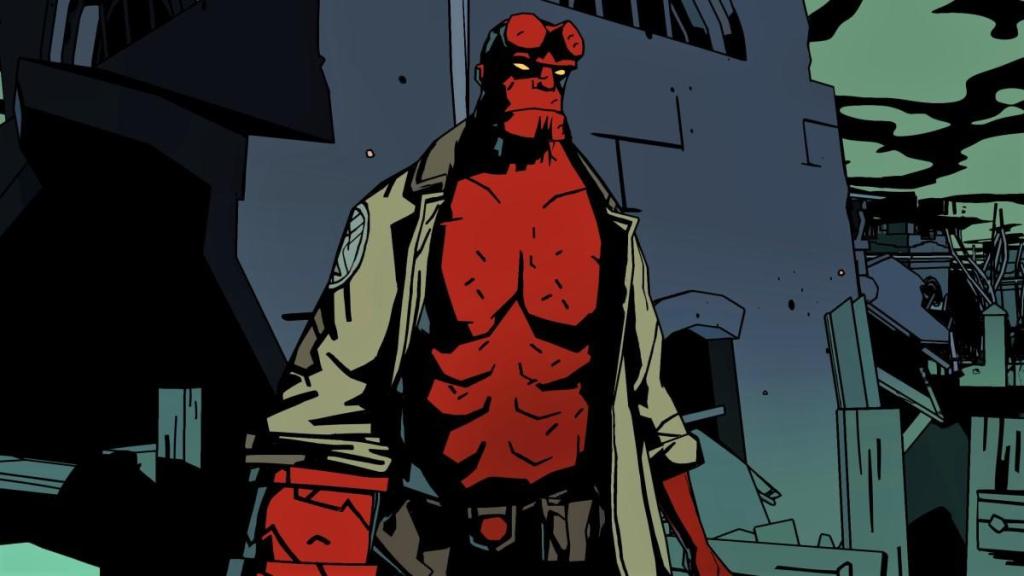
Patrick Martin: The memorable thing that stood out was we were doing one of the levels and I was deep into black mode. I was like, black everywhere. This is going to look exactly like the comic, and I’m looking at closely internally, yet this is all accurate. And you sort of step back and let people play and people can’t see. They go into a room and they can’t see a wall on the other side of the room, and there’s the gameplay needs. There is a slight tension point with all complete Mike Mignola style. So there’s some things we paired back, but we feel that the overall coverage kind of captures that technique that he uses. Yeah.
CB: I think Mike has been apparent in the past that there are other things that are never in the books. He just hates drawing them. And I couldn’t help but notice that those things are not in the game.
And I’m curious if that was a conscious choice or if it was just a matter of like, well, we don’t have a need for cars to be in the game, so it’s just not put cars in the game.
Patrick Martin: Oh, yeah. He does not like drawing cars. That’s right. I’m a transport design background, but maybe the odd car that is probably about that big. Certainly there’s things that he likes to draw very comfortable and things that he finds his way out of. And you’ll probably notice that there are, and certainly for gameplay needs, for example, it’s very useful to know where your feet are for your character. And Mike Mignola doesn’t always sometimes hides from the knees down or the waist down. So there was examples where we were more often showing more than Mike Mignola would show, but in his spirit as it were, and with his blessing, we were working our way around those.
CB: There are other elements of the game, the background environments that the levels are pretty linear and compact and where they are, but they all have big environments around them. And to me, those things really feel like Mignola drawings, even if they’re not exactly something he might have drawn. So when you’re creating something that maybe isn’t anything he’s ever drawn before, but you want to make it in his way, what’s the process of doing that? Do you have people on staff that can replicate his art?
Patrick Martin: Yes. That’s what we tried to do, educated guesses basically. And again, the first try at something wouldn’t necessarily nail it, and it would be, look at it with a critical eye, have a think and try again. So yeah, there was quite a number of things. I’m trying to think back now, what sort of examples, you’ve mentioned it to the environments, but even the early stage stuff where we were concepting, there’d be like, well, he’s never done anything in a biome here, so what does that mean? So really sort of fun puzzles, really. Like I say, he’s given lots of clues, not only in Hellboy obviously, but also in his other work and even his quarantine drawings that he’s done. The thing nice about that range of work is that it goes so outside of Hellboy. There’s a lot of sort of things he’s doing with metal and snails. There’s lots of madness there. Which yeah, like I say, it’s clues. Clues, really handy clues. And that’s the benefit of having someone who’s been working on this stuff for 30, 40 years, good body (of work).
CB: Are the same techniques used when you’re creating the look of the game compared to when you’re doing the cut scenes that look like comic panels? Or are you harder on yourself for literally replicating comic panels when you’re doing those moments?
Adam Langridge: Actually earlier on we did fill out some of these cut scenes with actual hand-drawn comic panels. And what we found is that we were accidentally introducing a third style to it. We’ve become kind of experts in making 3D, sorry, “experts.” We were much more confident in making 3D representations of Mignola’s work. And because we were so attuned to his work, the 2D stuff almost seemed like hard to get right in our view. So we moved away from having as much hand drawn stuff for cut scenes and migrated it all over into 3D vignettes and one-off scenes in one-off moments. Which even though it felt like in my, I was a bit sad to have something that you only saw once. It’s like there’s an amazing 3D model here and you get to see it for all of eight seconds and it’s gone. But the art team were so confident and fast that it seemed like actually the better way to try and keep that sense of consistency throughout the whole game.
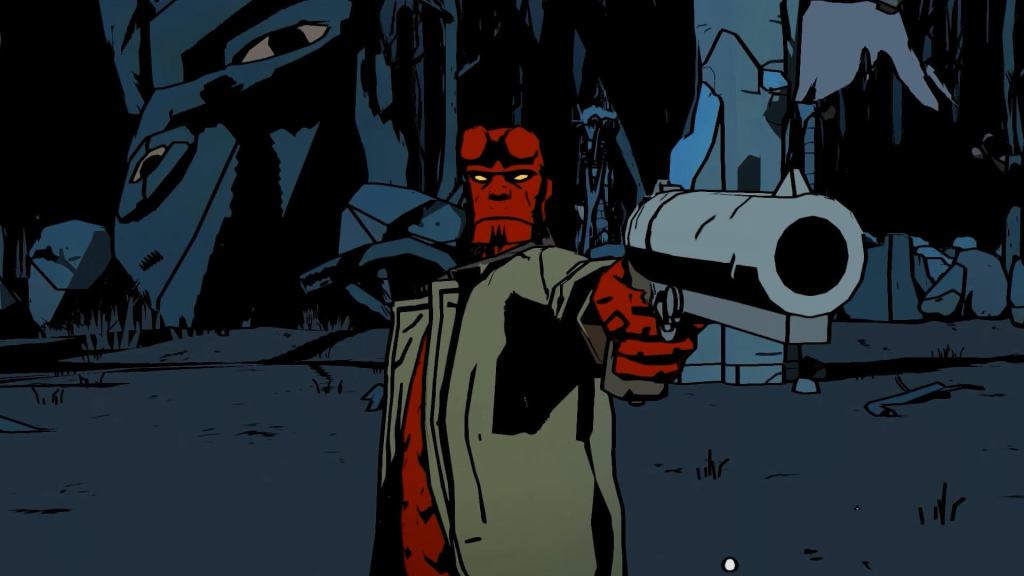
CB: Let’s talk about the enemies in the game, because they’re not really based on anything from the books really. I think I can see influences in a handful of them, of course, some of the later ones, obviously. What are the conversations like in first deciding, alright, these are are the levels and these will be the enemies, and then creating a new enemy, a new bad guy that Mike’s never drawn, but looks like a Mike drawing.
Patrick Martin: So again, you’re aware of the work that’s already been done, and I think there’s a few images of knights and things like that that have been done. So you pull those together and obviously at this early starting point, you’re kind of trying to nail down some narrative beats and some themes that you’re trying to get into your game. And one of the early things we want to do, well, I think we’d try and approach that with all our games, is to take something and try and make it unique to the game we’re making.
Cont’d
And the idea, I think I just had the idea for adding skeletons inside and it sort of paid into the story element for that area. But yeah, it’s that move. We could have stopped at stone statues, but actually it was like, do you know what we need to make it just that little bit more strange bit weirder in the Wyrd and creepy in some respects. So that was where the skeletons came in. It kind of just makes you, it adds an extra layer, which I think is super interesting. When you meet these things for the first time, it’s like you start to ask questions. And I think that’s what you have when you read a Mike Mignola story, really. You’re asking questions as you go. It’s not a case of the generic version of something that you may know all about already. He provides mystery and surprise. So that’s what we aim for.
CB: Was it just Mike’s work that influenced the look, or did you look at the things that influenced Mike, which is Old Hammer movies, Frank Frazetta artwork, Jack Kirby artwork?
Patrick Martin: I don’t think we particularly did, but that’s not to say that at Adam and mine’s age, that doesn’t mean we’ve not looked at that in the past and absorbed it. So it certainly wasn’t a conscious decision, but obviously there’s layers and layers in there in our background. That means that those touch points that you mentioned are there. But no, I think consciously it was much more of Mike’s work. Yeah.
CB: Did any of the other Hellboy artists have any sort includence? did you look at Duncan Fegredo or Richard Corben or any of these other that are key pillars alongside Mike in the look of Hellboy? Was there ever a thing that you’re like, he’s never drawn that, but Richard Corbin drew it here? Maybe that can be like our building block.
Patrick Martin: I’m a big fan of the Crooked Man story. There was something that, reading that story actually, that’s the one that’s creeped me out the most. And I think there’s something in Corben’s art style that allows him to make that story really speak to me in a way. I was really just disturbed after it. And there’s something in his art style, it was a bit dusty and I almost taste it really. I could taste the decay. Now. Where was it an influence? I think we had to be a bit careful. I think different artists and their rendering styles can allow you to portray different things. And the more Cartoonified something is, the more gore or something you can get away with, violence you can get away with. So again, we make sure the Mike Mignola’s Hellboy is very important to us to stick to the themes that Mike, and the touch points that Mike Mignola comes up with to try and give that authenticity really. So yes, we are aware of the other ones, but it was also a case of we won’t do this one, we won’t do this. Or because it allows us to, it feels like, to feel like Mike’s done it
No Abe Sapien in the game
CB: This is maybe veering away from art, but I sort of think it’s still leaning into Mike’s aesthetic, which is, correct me if I’m wrong, but in the cannon, this game takes place the 1980s. So this is pre-frogs. There’s no frogs in this game. Was that a conscious choice to avoid frogs?
Adam Langridge: Yeah. Frogs didn’t really factor into it, but what we were really interested in trying to do was bring essentially two potential groups of fans together. So we’ve made this as from a gameplay point of view, we tried to make it something that was friendly to people that hadn’t played lots of Beat ’em ups before, and people could introduce people to that kind of gameplay, still have a good time. And then the opposite way round as well, we wanted to introduce people who were into Beat-em-ups but had never come across Hellboy before. We wanted to introduce them to Hellboy in a way that set them up to read on from Seed of Destruction essentially. So we were very, very careful about not giving away too many spoilers about what happens in the future. There’s nothing really about his horns or crown stuff going on. We wanted to be more, almost a bit of an exercise in his earlier days at the BPRD and not hint too much about anything bigger. So it was quite a challenge to try and get that set up as the most, a standalone adventure that could fit into the canon, but doesn’t give too much away at the same time. So that’s why we sort of try to land there. We thought, oh, that’s a good place. We have a cool adventure there. And it’s before Seed of Destruction. And still during his fairly high adventure BPRD time before he goes off on his exodus and all the other cool stuff that he does later on.
CB: Abe’s not in the game, Professor Broom is in it, but just a voice on a radio. Does that also play into that, of not including some of these bigger characters as well?
Adam Langridge: Yes. Yes, it does, actually. So we were in and out regarding whether to get Abe there, and we actually picked a year where technically we could, we couldn’t have had Abe in there, but we just realized that for the story we were trying to tell, there wasn’t really…Abe came along with almost unkept promises to the player a little bit. It’s like, oh, here’s a cool, I love Abe, can I play him? So we sort of denied ourselves the pleasure of getting Abe in the game as well, which was quite painful, to be honest. I remember quite a bit of sadness about that.
CB: Is that the end of the story? Do you guys have post-launch plans for the game? Are there lingering ideas for a follow-up perhaps?
Adam Langridge: Oh, well, always ideas. Always ideas. But at the moment, that’s all they are. So yeah, we’ve had absolute brilliant ride on this one. I was so happy to have worked on it and really, really chuffed with a lot of the stuff that is in there and how the team has done. So we think that’s probably, that’s our help. We chapter for now, but we want to do more. Oh yeah, like a shot.

